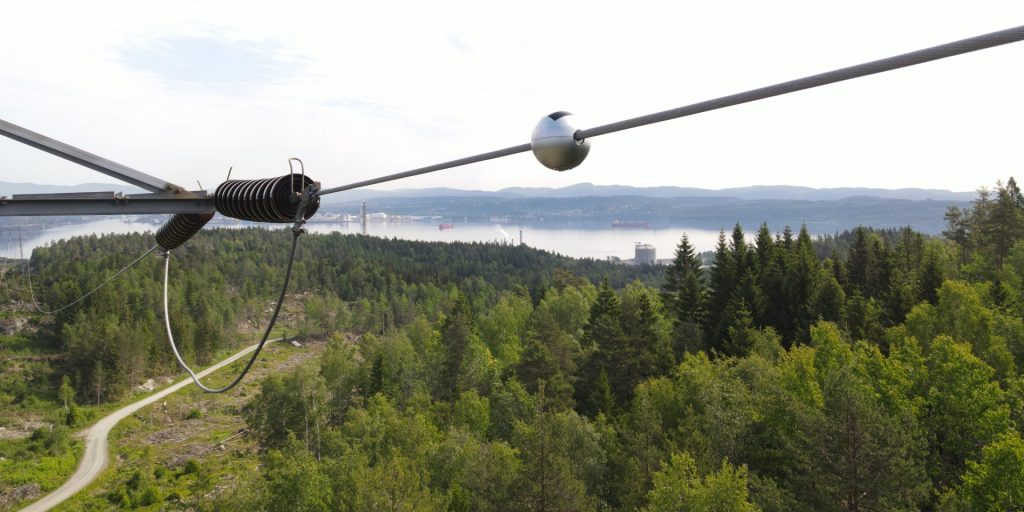
Power grid optimizer Heimdall Power paired up with weather intelligence tech company Meteomatics – and a 30% increase in power grids’ transmission capacity resulted.
Most power lines today are “dumb” – that is, operated without insight into their real-time conditions. That means the grid’s total capacity is untapped. Power grid optimizers provide grid operators with the data they need to predict the real-time actual capacity of specific power lines and determine new, safe limits for operating them.
Oslo-based Heimdall Power combined its software and sensor data with Switzerland’s Meteomatics’ weather and climate data to monitor and forecast the real-time capacity of high-voltage power lines in Europe for over three years.
Heimdall Power asserts that power grid operators like Swissgrid, Austrian Power Grid, and TenneT are now able to maximize available capacity on their existing lines. With Meteomatics’ data integrated into its technology, Heimdall Power is powering, on average, a 30% increase in utilities’ transmission capacity.
Heimdall Power’s sensors are installed on live, high-voltage power lines and measure the line’s temperature, current, and angle in real-time. The sensor data is collected and processed by the company’s software platform, where it’s analyzed and paired with Meteomatics’ precision weather and climate data gathered by weather drones in the atmosphere’s lower 6 km (3.7 miles).

By combining Meteomatics’ weather data with power line data and machine learning, Heimdall Power says they’ve developed a unique algorithm that enables grid operators to enhance their transmission capacity instantly – and safely.
This tech allows grid operators to optimize their transmission and enables them to integrate more renewable energy into the existing grid.
Heimdall Power and Meteomatics are now bringing their tech to the US. They’re already working with Heimdall Power’s existing US customers, including Great River Energy in Minnesota and a large investor-owned utility in the Midwest.
The two businesses are currently achieving the 10-day transmission line capacity forecasting that Federal Energy Regulation (FERC) Order 881 will require by the summer of 2025.
FERC Order 881 is designed to reduce grid congestion. It will mandate utilities to implement hourly ratings that change based on the projected ambient temperature every hour instead of just summer and winter ratings.
Paul Walsh, CEO of Meteomatics North America, said:
By combining our weather insights with Heimdall Power, we’re offering companies a look into their real-time power line capacities – something that a majority of energy grid companies have not had access to before. We’re looking forward to continuing our work together stateside.
Read more: This is what the electricity grids need now to support clean energy
Photos: Heimdall Power
To limit power outages and make your home more resilient, consider going solar with a battery storage system. In order to find a trusted, reliable solar installer near you that offers competitive pricing, check out EnergySage, a free service that makes it easy for you to go solar. They have hundreds of pre-vetted solar installers competing for your business, ensuring you get high quality solutions and save 20-30% compared to going it alone. Plus, it’s free to use and you won’t get sales calls until you select an installer and you share your phone number with them.
Your personalized solar quotes are easy to compare online and you’ll get access to unbiased Energy Advisers to help you every step of the way. Get started here. – ad*
Author: Michelle Lewis
Source: Electrek



